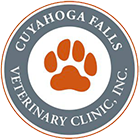Among all of the things that you can do for your pet, there isn’t much more important than helping him/her maintain a healthy body condition. This is critical to optimum quality-of-life and cannot be overemphasized. Excess weight is unhealthy for cats or dogs. Obesity is a disease. The good news is this: obesity is avoidable! The following information will help you prevent obesity from becoming a problem. (And if obesity is already part of the picture for your pet, don’t be discouraged! There’s good news towards the bottom of this post!)
A landmark study published in 2002 looked at how dogs fared over time when they were fed without restrictions versus dogs whose meals were portioned and controlled. The study showed that dogs at a healthy body condition lived, on average 2 years longer. Additionally, dogs at a healthy body condition had a delayed onset of chronic disease. And then there was this stunner: by the time the last dog from the overweight/obese group passed away fully one-third (33%) of the portion-controlled dogs were living. Wow!
At this point, it is important to answer two questions:
The first question we must answer is, “What is a good body condition?”
At the Cuyahoga Falls Veterinary Clinic we use a body condition score a pet’s body condition.

1: VERY THIN
Ribs are easily felt (even seen on short-coated breeds) with no fat cover. The bones over the tail base are prominent. There is a severe abdominal tuck. An accentuated hourglass shape is seen when viewed from above.
2: UNDERWEIGHT
Ribs are easily felt with little fat cover. The bones over the tail base are raised with slight fat cover. Abdominal tuck is visible on side view. A marked hourglass shape is seen when viewed from above.
3: IDEAL
Ribs are easily felt with slight fat cover. The tail base has a smooth contour with slight fat cover. There is an abdominal tuck when viewed from the side. A well-proportioned waist is seen when viewed from above.
4: OVERWEIGHT
Ribs are felt with difficulty under moderate fat cover. Some thickening of the tail base is felt under moderate fat cover. No abdominal tuck can be seen on side view. A broad waist is seen overhead.
5: OBESE
Ribs and tail base are difficult to feel under a thick fat cover. No waist line can be determined and fat hangs from the abdomen. The back is markedly broadened when viewed from above.
(Some will use a 9-point scale, which is easily converted from the 5-point scale and communicates the same information.)
It is important to understand that this scoring system is neither judgmental nor critical. The goal is to accurately identify the condition and health of the pet. Weight and pounds/kiligrams alone are not helpful. Consider the great variation within some breeds! Some labs, for instance are 55# at an ideal body condition while others are 100#.
The second question over all that we must answer is, “How can I maintain my pet at a healthy body condition?”
In order to answer this question, it is important to have a good grasp of the body condition scoring above. Once this is understood, it is possible to move on to the following concept:
Feed according to body condition, not according to feeding-charts and measurements.
The feeding directions on all bags of food are designed for pets who are young, heathy and active, and sexually intact. But our pets spend the majority of their lives in the middle-aged to senior life stages, many of them become less active and sometimes even lazy with age, and the vast majority have been spayed/neutered. All of this means that feeding directions on the bag/can of food are meaningless to a significant majority of our pets!
Additionally, feeding does not equal love. Maintaining a healthy body condition, which directly and positively impacts an animal’s health, equals love.
Take an objective look at your pet and keep the Body Condition Score and criteria in mind. Where does your pet fall? (Keep in mind that nationwide studies have shown that most owners score their pet 1 point “more ideal” than they really are!) If your pet meets the criteria of 3/5 or if your pet falls somewhere between 2/5 and 3/5, your pet is receiving the absolute best combination of food and exercise. If you pet no longer meets the criteria of 3/5 and either is creeping towards 4/5 or is firmly planted at 5/5, your pet is receiving too many calories. Exercise is important when it comes to managing body condition, but excess calories are the main reason a pet moves beyond a healthy body condition.
If your pet is classified as overweight or obese, do not lose heart! There are good, achievable solutions to help your pet become healthy again. Good, calorie-restricted diets are available that dogs and cats will enjoy, and for the dogs that really struggle with weight loss, a good treatment is available that is nothing short of effective and successful.
No matter the topic, be it spay/neuter, orthopedic surgery, body condition management or any other subject of veterinary medicine, our primary goal is promoting quality-of-life in our patients. If the information above has prompted questions in your mind, give us a call at 330-929-3223 to set up an appointment for a conversation with our doctors.
(Body Condition Score chart from Hill’s Pet Nutrition.)


The Cuyahoga Falls Veterinary Clinic | Animal Wellness | Medical Services | Pet Services
[…] it comes to feeding their dogs, 26% estimate on their own how much their dog needs to eat, and 17% fill the bowl whenever it is […]